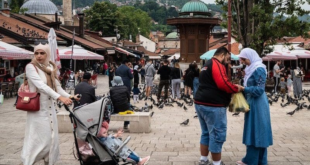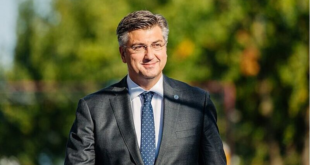United Nations observers did not record any cases of Bosnian forces opening artillery fire in 1993 and 1994 during the conflict in Sarajevo, a prosecution witness has told the court trying Radovan Karadzic.
Major Francis Roy Thomas said under cross-examination at The Hague Serb forces never complained to UN observers about tanks from Bosnian forces opening fire on them.
He said: “If artillery weapons are used for sustaining defence, it is considered a legitimate target, but if civilians are harmed, it is not legitimate.
“If a military document makes no mention of civilians, it does not mean we did not get a report on the number of killed civilians,” he said, explaining several documents presented to him by Karadzic, the former President and Supreme Commander of Republika Srpska’s armed forces.
Karadzic faces charges of genocide, crimes against humanity and helping spread terror among the civilian population of Sarajevo through a sniper and shelling campaign conducted in the city from 1992 to 1995.
Thomas disagreed with a statement by Karadzic that between 50,000 and 80,000 members of the Army of Bosnia and Herzegovina, who Karadzic said were able to open fire on positions held by Bosnian Serbs, were based in Sarajevo.
“I think they exaggerated when they spoke about the numbers. We had some estimates, but I believe they did not correspond to the actual numbers,” Thomas said.
He confirmed that 42 kilometres of frontlines held by Bosnian Serbs and Muslims in Sarajevo adjoined each other and later increased to 62 kilometres.
Thomas confirmed members of the Croatian Defence Council, HVO, shelled the city for a certain period of time.
The witness explained he often used this fact as an anecdote to describe the nature of the war in Bosnia and Herzegovina, explaining that Croats from Kiseljak opened fire on Croats living in Sarajevo.
Speaking about the sniper fire, the witness said an elderly man was hit near the airport on a road leading towards the Dobrinja settlement, as a crew from US broadcaster CNN was passing by.
Thomas said they were not able to identify the position from which the man had been wounded.
He said he used the example of the incident, which was filmed by the crew and later broadcast in the news, in an effort to show the situation in Sarajevo at that time.
The trial is due to continue on September 27.
 Eurasia Press & News
Eurasia Press & News



